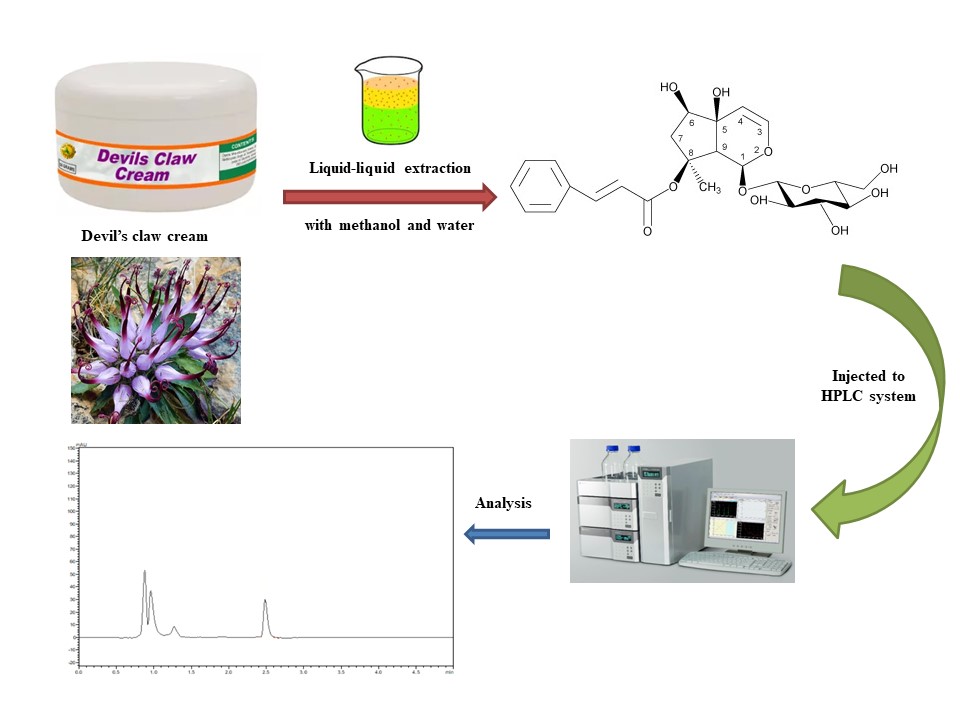JOURNAL 3497
Journal of Chemical Metrology
Available Online: June 01,2025
p.1 - 9
http://doi.org/10.25135/jcm.114.2504.3497 (DOI number will be activated after the manuscript has been available in an issue.)
Viewed 53 times.
GRAPHICAL ABSTRACT

ABSTRACT
Harpagoside, an iridoid glycoside, is the primary active compound found in Harpagophytum procumbens DC. ex Meisn. The main goal of this work was to develop a high-performance liquid chromatographic (HPLC) method for measuring the amount of harpagoside in different cream samples that is rapid, straightforward, and accurate. Prior to chromatographic separation, liquid-liquid extraction was used for the preparation of samples, which is now the predominant extraction technique due to its simplicity, speed, and efficiency. Reversed phase C18 (5 µm × 4.6 mm × 150 mm) analytical column, methanol and water (60:40 v/v) at a flow rate of 1.1 mL/min, and a UV detector that detected at 272±1 nm were used to achieve the chromatographic separation. The linear behaviour of the proposed approach was examined in the 0.1-30 ng/mL range (r2=0.9998). The proposed method is in alignment with the criteria that is established by International Conference on Hormonisation (ICH) about the accuracy, precision, repeatability, specificity, robustness and detection and quantification. Limit of Detection and Limit of Quantification are determined to be 0.03 and 0.1 ng/mL whereas relative standard deviation was determined to be less than 3.42% for daily and hourly measurements. The suggested analytical process is a productive way to measure and routinely analyse harpagoside in creams containing Devil’s claw.
KEYWORDS- Harpagoside
- Devil’s claw
- HPLC-UV
- method validation